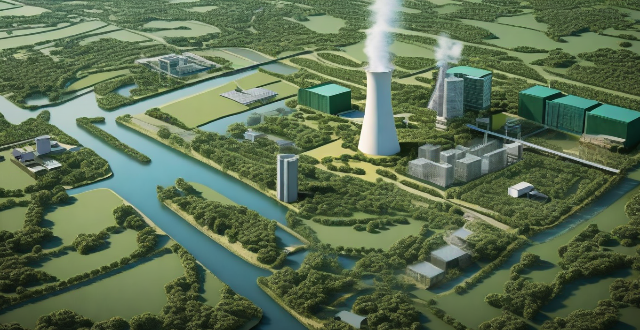Geothermal energy is a renewable and sustainable source of energy that harnesses the natural heat from within the Earth's crust. This energy is obtained by drilling wells into the Earth's crust, where the heat is transferred to water or another fluid in a heat exchanger. The heated fluid then spins a turbine to generate electricity. There are three main types of geothermal power plants: dry steam, flash steam, and binary cycle. While geothermal energy has many benefits, including being renewable, cost-effective, and abundant in certain areas, it also comes with high upfront costs and location limitations. Additionally, there are environmental impacts associated with its use, such as potential contributions to earthquakes and impacts on local ecosystems. Despite these challenges, geothermal energy remains a valuable addition to our portfolio of renewable energy sources.

How Does Geothermal Energy Work?
Geothermal energy is a renewable energy source that harnesses the heat from the Earth's interior. This heat is generated by the decay of radioactive materials and the slow shrinking of the planet, which causes pressure and friction. The heat is then transferred to the Earth's surface through hot water and steam.
Components of a Geothermal Power Plant
1. Drilling: Wells are drilled into the Earth's crust to access the geothermal resources.
2. Heat Exchanger: The heat from the Earth is transferred to a fluid (usually water) in a heat exchanger.
3. Turbine: The heated fluid is used to spin a turbine, which generates electricity.
4. Cooling: The cooled fluid is then returned back into the ground to be reheated.
Types of Geothermal Power Plants
There are three main types of geothermal power plants:
- Dry Steam: Uses steam directly from the Earth's crust to spin a turbine.
- Flash Steam: Uses high-pressure hot water that is "flashed" into steam to spin a turbine.
- Binary Cycle: Uses a secondary fluid with a lower boiling point than water to generate electricity.
Is Geothermal Energy a Viable Alternative Energy Source?
Yes, geothermal energy is a viable alternative energy source for several reasons:
- Renewable: Geothermal energy is renewable because it relies on the Earth's natural heat, which is constantly being replenished.
- Sustainable: Unlike fossil fuels, geothermal energy does not produce greenhouse gases or pollutants, making it a sustainable option for meeting our energy needs.
- Cost-Effective: Once installed, geothermal power plants have low operating costs and can provide reliable, baseload power.
- Abundant: Geothermal resources are abundant in many parts of the world, especially in areas with high volcanic activity.
However, there are also some challenges associated with geothermal energy:
- High Upfront Costs: Drilling wells and building infrastructure can be expensive.
- Location Limitations: Geothermal resources are not available everywhere, limiting its potential as a global solution.
- Environmental Impact: While generally considered environmentally friendly, geothermal power plants can still have an impact on local ecosystems and may contribute to earthquakes under certain conditions.
Overall, while geothermal energy may not be a perfect solution for all regions or situations, it is certainly a valuable addition to our portfolio of renewable energy sources.